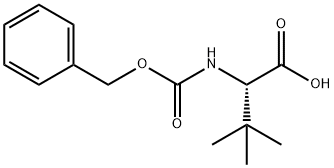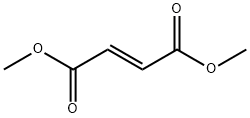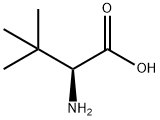Cbz-L-tert-Leucine
- CAS NO.:62965-10-0
- Empirical Formula: C14H19NO4
- Molecular Weight: 265.3
- MDL number: MFCD00137411
- SAFETY DATA SHEET (SDS)
- Update Date: 2025-07-24 18:13:53

What is Cbz-L-tert-Leucine?
Chemical properties
Pale Yellow Thick Oil
The Uses of Cbz-L-tert-Leucine
Cbz-L-tert-Leucine is a leucine derivative used in the preparation of various pharmaceutical agents such as TRPV4 antagonists, HIV-1 protease inhibitors and serine protease inhibitors.
Properties of Cbz-L-tert-Leucine
| Boiling point: | 436.4±38.0 °C(Predicted) |
| Density | 1.160±0.06 g/cm3(Predicted) |
| storage temp. | Sealed in dry,2-8°C |
| solubility | Chloroform (Sparingly), Methanol (Slightly) |
| pka | 4.01±0.10(Predicted) |
| form | Oil |
| color | Pale to Light Yellow |
| CAS DataBase Reference | 62965-10-0 |
Safety information for Cbz-L-tert-Leucine
Computed Descriptors for Cbz-L-tert-Leucine
Cbz-L-tert-Leucine manufacturer
JSK Chemicals
3Y
Phone:+91-9879767984
Whatsapp: +91-9879767970
product: 63965-10-0 Cbz-L-tert-Leucine,97% 99%
New Products
4,4-Difluoropiperidine hydrochloride tert-butyl 9-methoxy-3-azaspiro[5.5]undecane-3-carboxylate Indole Methyl Resin N-Isopropylurea N,N-Dicyclohexylcarbodiimide(DCC) MELDRUMS ACID 5-METHYLISOXAZOLE-4-CARBOXYLIC ACID Magnessium Bis glycinate Zinc ascorbate 1-bromo-2-butyne 2-acetamidophenol 9(10H)-anthracenone Erythrosin B, 4-Piperidinopiperidine 2-((4-morpholinophenylamino) (methylthio) methylene) malononitrile 2,4-dihydroxybenzaldehyde 3-(4-morpholinophenylamino)-5-amino-1H-pyrazole-4-carbonitrile Methyl 2-methylquinoline-6-carboxylate 2,6-dichloro-4-nitropyridine 4-Bromo-2-chlorobenzonitrile 2-(benzylamino)acetic acid hydrochloride 4-(tert-Butoxycarbonylamino)but- 2-ynoic acid 3,4-dihydro-2H-benzo[b][1,4]dioxepine 1-Phenyl-1-cycloprppanecarboxylicacidRelated products of tetrahydrofuran








You may like
-
 63965-10-0 Cbz-L-tert-Leucine,97% 99%View Details
63965-10-0 Cbz-L-tert-Leucine,97% 99%View Details
63965-10-0 -
 Cbz-L-tert-Leucine 97% CAS 62965-10-0View Details
Cbz-L-tert-Leucine 97% CAS 62965-10-0View Details
62965-10-0 -
 3-(4-amino-1-oxoisoindolin-2-yl)-1-methylpiperidine-2,6-dione 98%View Details
3-(4-amino-1-oxoisoindolin-2-yl)-1-methylpiperidine-2,6-dione 98%View Details -
 614-19-7 98%View Details
614-19-7 98%View Details
614-19-7 -
 20677-73-0 (2,2-diethoxyethyl)methylamine 98%View Details
20677-73-0 (2,2-diethoxyethyl)methylamine 98%View Details
20677-73-0 -
 3-(4-(hydroxyamino)-1-oxoisoindolin-2-yl)piperidine-2,6-dione 98%View Details
3-(4-(hydroxyamino)-1-oxoisoindolin-2-yl)piperidine-2,6-dione 98%View Details -
 57381-49-4 2-bromo-4-chlorobenzonitrile 98%View Details
57381-49-4 2-bromo-4-chlorobenzonitrile 98%View Details
57381-49-4 -
 4,6-dichloropyrimidine-5-carbaldehyde 98%View Details
4,6-dichloropyrimidine-5-carbaldehyde 98%View Details
5305-40-8
Statement: All products displayed on this website are only used for non medical purposes such as industrial applications or scientific research, and cannot be used for clinical diagnosis or treatment of humans or animals. They are not medicinal or edible.
